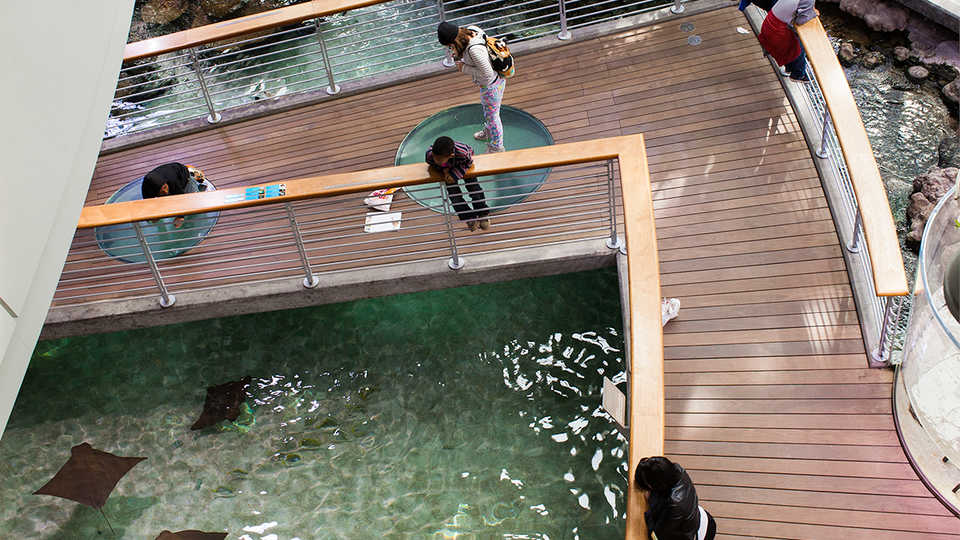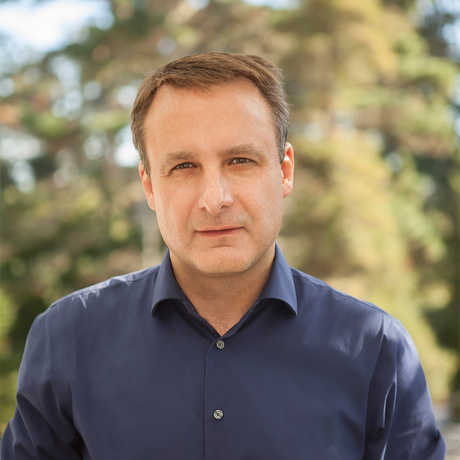An expert in ecosystem science and sustainability, Dr. Foley is steering the Academy through an exciting chapter in its 160-year history, leading its efforts to explore and explain the natural world while addressing critical sustainability challenges. Read his full bio.

It has been a very busy summer at the California Academy of Sciences, with tremendous crowds coming to see our new Twilight Zone: Deep Reefs Revealed aquarium exhibit and this year’s BigPicture nature photography exhibition. If you haven’t seen these yet, please drop by soon—you’re in for a treat!
We have also been very busy taking the Academy’s wonderful science, educational know-how, and storytelling to global audiences, as well as building up our sustainability education efforts.
During the last year, we have launched a powerful, new Environmental Literacy Initiative, which aims to provide incredible educational materials for biology and environmental science teachers and students across the world, for free. One of the early installments of this was a wonderful course about biodiversity, featuring our very own star curator, Dr. Rich Mooi, co-produced with the Khan Academy. This course has already been seen by over 1.5 million students. Newer resources include the Flipside Science video series, which features young people teaching their peers about everyday environmental solutions, and special classroom versions of our award-winning Habitat Earth planetarium show about the Earth’s ecosystems.
Our goal is to serve as a world-leading provider of free teaching and educational materials in environmental science and sustainability, and we are well underway. These efforts are helping us connect with teachers and students across the nation—indeed, across the world—and make a real difference in STEM education far beyond San Francisco.
And the Academy’s iNaturalist platform—a powerful, global tool for engaging everyday citizens in making scientific observations of biodiversity—is growing rapidly. There are now nearly 250,000 worldwide participants in the iNaturalist network, and together they have made over 3 million observations. Already, this is one of the largest sets of scientific measurements of the natural world ever made. Of particular note: iNaturalist was recently used to conduct a nationwide “bio-blitz” of our national parks. And we were thrilled that National Public Radio (NPR) just did a wonderful highlight on the iNaturalist program.
We have also launched an exciting new global media initiative with the release of bioGraphic.com—an incredible, new, immersive web magazine focused on the wonders of the natural world and incredible people working to sustain them. bioGraphic launched just a few months ago, and has already reached nearly 300 million online impressions through its own website, a growing social media community, and through content distribution partnerships with Scientific American, Atlas Obscura, Vox, Discover, The Guardian, and SFGate, among others.
In case you've missed them, here are a few of the most popular stories on bioGraphic so far:
- A stunning photo-essay about a superpod of sperm whales (also syndicated by Atlas Obscura)
- A story about the surprising symbiosis between an endangered woodpecker and the U.S. military
- A video that reveals what scientists have learned about bumblebee flight from timelapse footage (syndicated by Scientific American, Gizmodo, New York Magazine, SFGate, and KGO-TV)
- A feature about the fight to save North America's largest salamanders (they're up to two feet long!)
- A series of opinion pieces (including this latest piece from yours truly) about our ability to live sustainably on this planet
- A video on how scientists are studying the spectacle of bats emerging from caves, revealed frame by frame through high speed videography (syndicated by Popular Science and VICE)
- A slideshow featuring photographs of "lost frogs"—species once thought to be extinct that now inspire hope for amphibian conservation efforts (syndicated by The Guardian, Discover, Mongabay, and Vox)
I hope you'll take a few moments to enjoy some of these beautiful and awe-inspiring stories. And if you like what you see, be sure to subscribe to our email newsletter or follow us on Facebook, Twitter, Instagram, and YouTube to stay up to date on our latest stories.
Finally, I am happy to let you know that I’ve returned to my roots, and have started to speak and write much more about environmental science, education, the environment, and sustainability solutions. To collect most of this work, I’ve started a new blog—called the Macroscope—which I invite you to visit. Recent pieces include an essay about personal steps to address climate change, a challenge to scientists to better engage public audiences in their research, a critique of local food systems that try to go too far, an essay about the importance of natural history in biology education, and an essay about the lessons we can learn from the planet, if we just stop and pay attention to it. I hope you enjoy it!
In the meantime, please do not hesitate to reach out to me if you have any questions or comments—you can find me on Twitter (@GlobalEcoGuy) or on Facebook.
Best Wishes,
Jon
Dr. Jonathan Foley
